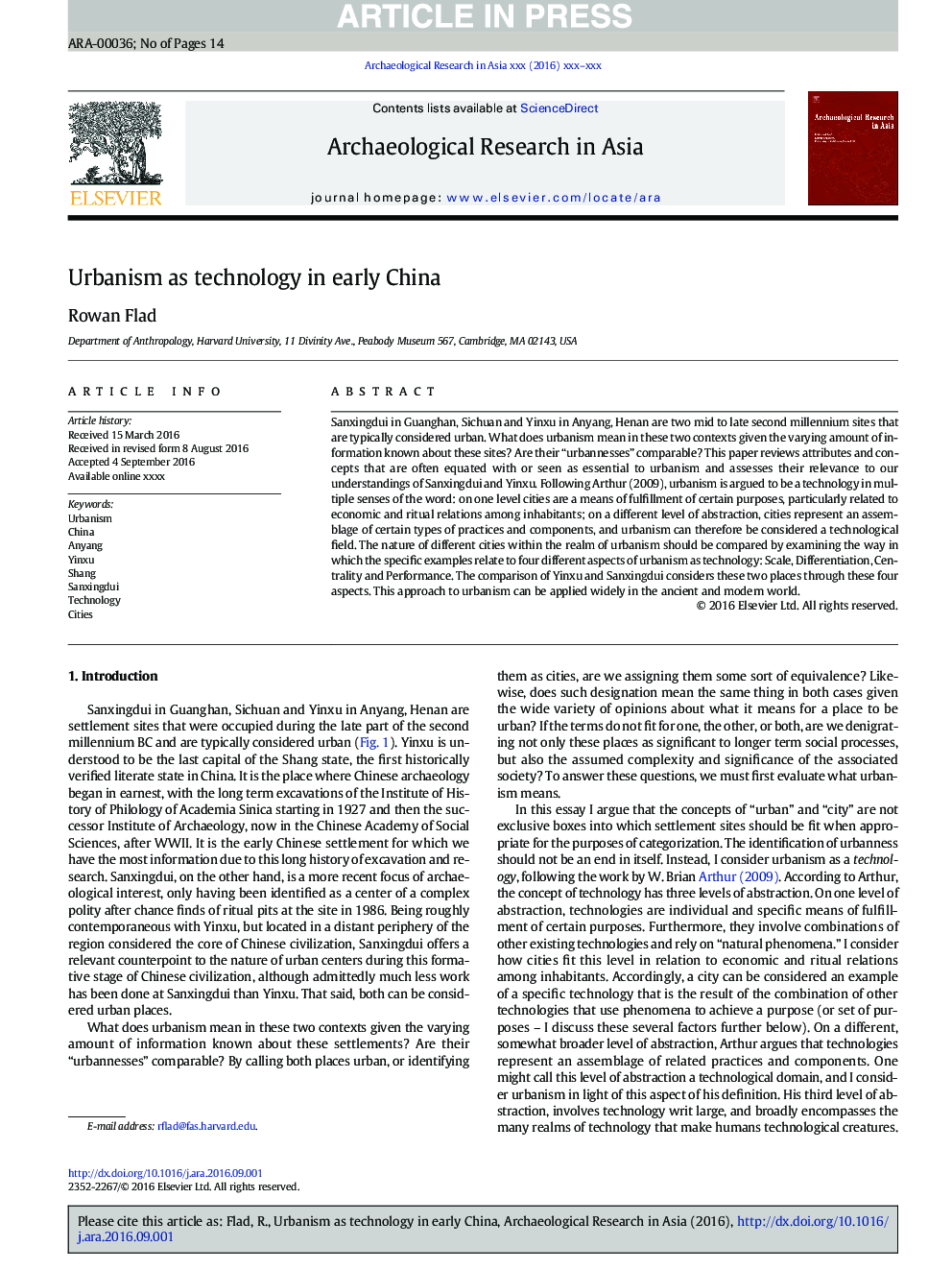| Article ID | Journal | Published Year | Pages | File Type |
|---|---|---|---|---|
| 7440178 | Archaeological Research in Asia | 2018 | 14 Pages |
Abstract
Sanxingdui in Guanghan, Sichuan and Yinxu in Anyang, Henan are two mid to late second millennium sites that are typically considered urban. What does urbanism mean in these two contexts given the varying amount of information known about these sites? Are their “urbannesses” comparable? This paper reviews attributes and concepts that are often equated with or seen as essential to urbanism and assesses their relevance to our understandings of Sanxingdui and Yinxu. Following Arthur (2009), urbanism is argued to be a technology in multiple senses of the word: on one level cities are a means of fulfillment of certain purposes, particularly related to economic and ritual relations among inhabitants; on a different level of abstraction, cities represent an assemblage of certain types of practices and components, and urbanism can therefore be considered a technological field. The nature of different cities within the realm of urbanism should be compared by examining the way in which the specific examples relate to four different aspects of urbanism as technology: Scale, Differentiation, Centrality and Performance. The comparison of Yinxu and Sanxingdui considers these two places through these four aspects. This approach to urbanism can be applied widely in the ancient and modern world.
Keywords
Related Topics
Social Sciences and Humanities
Arts and Humanities
History
Authors
Rowan Flad,
